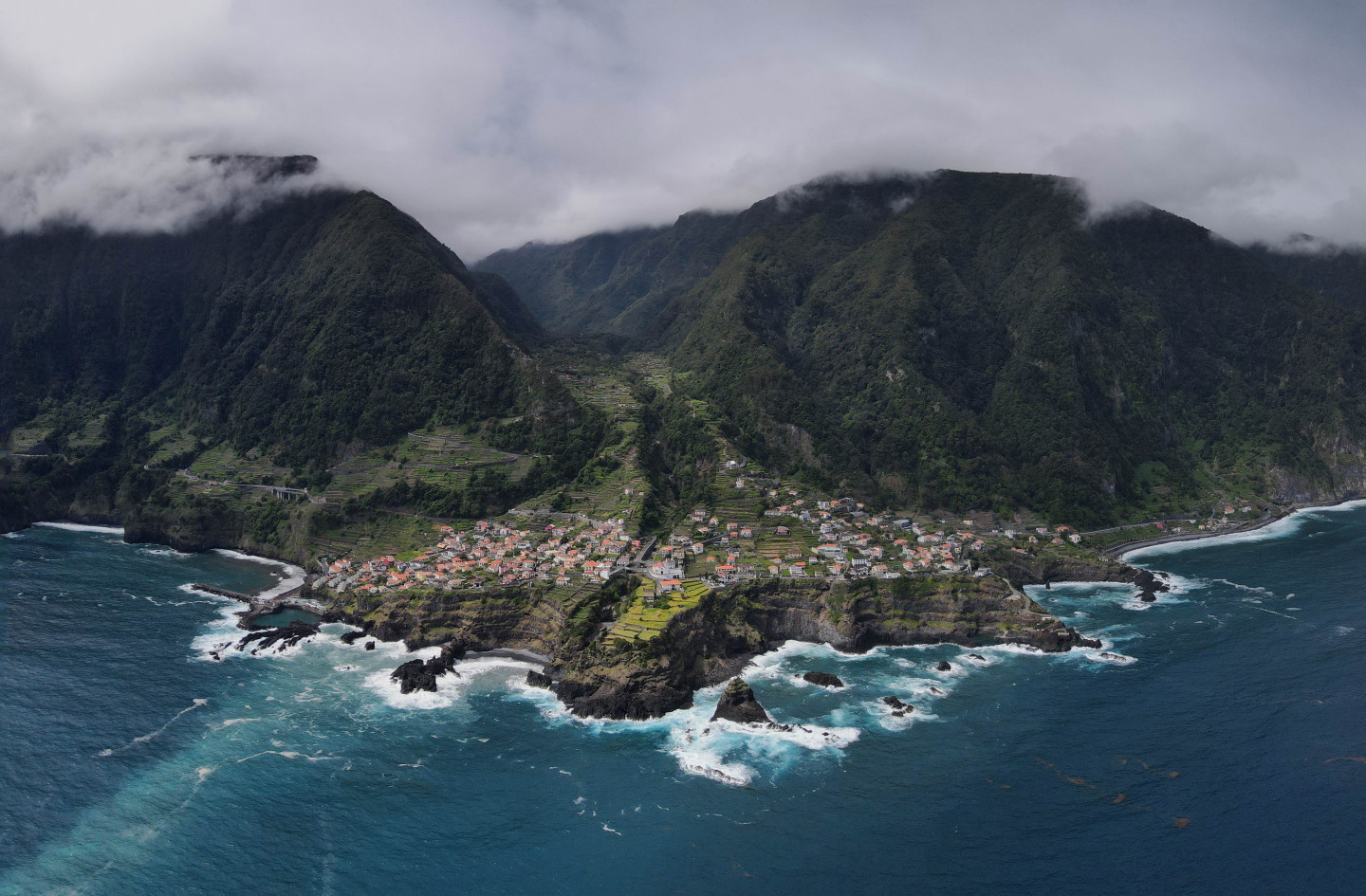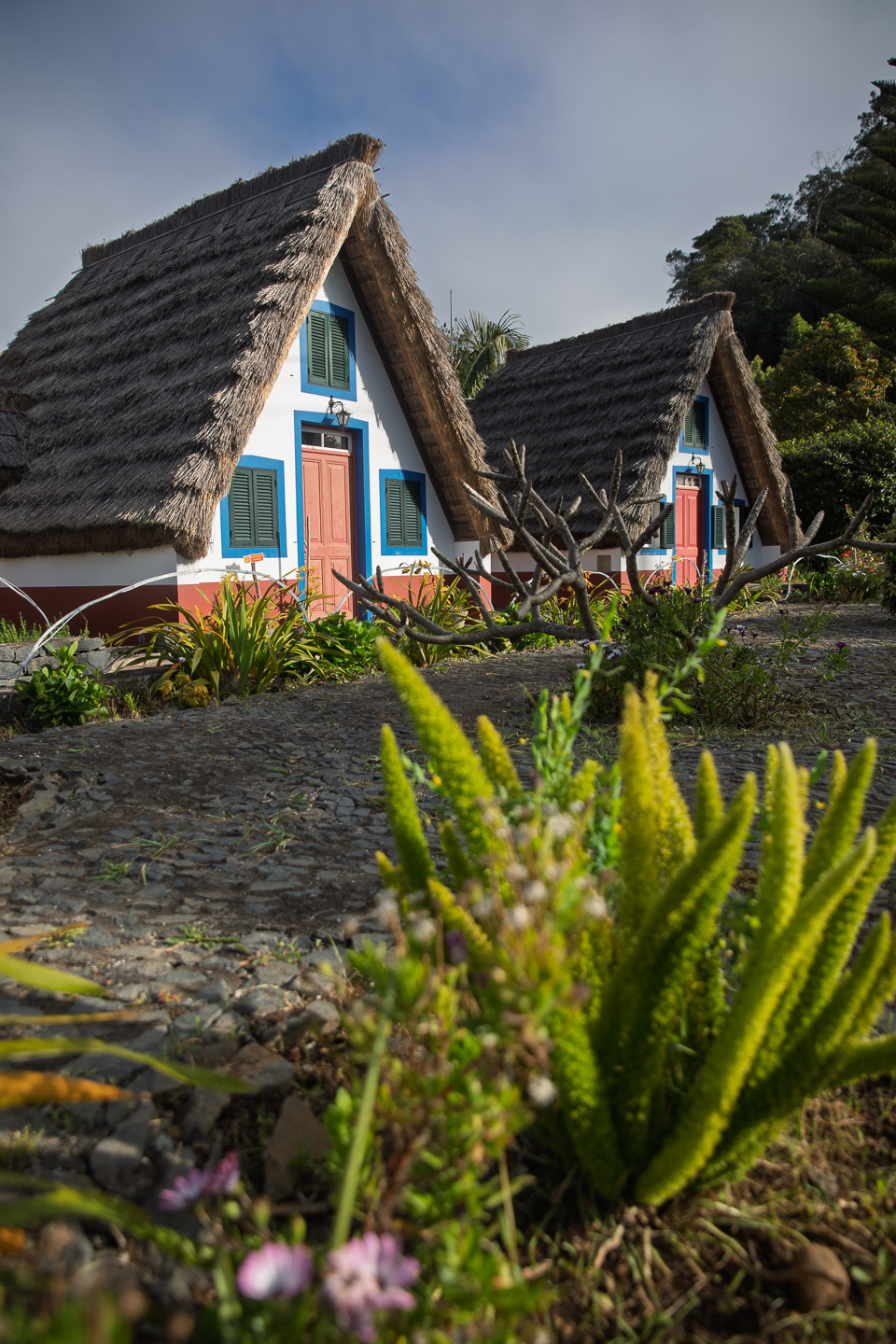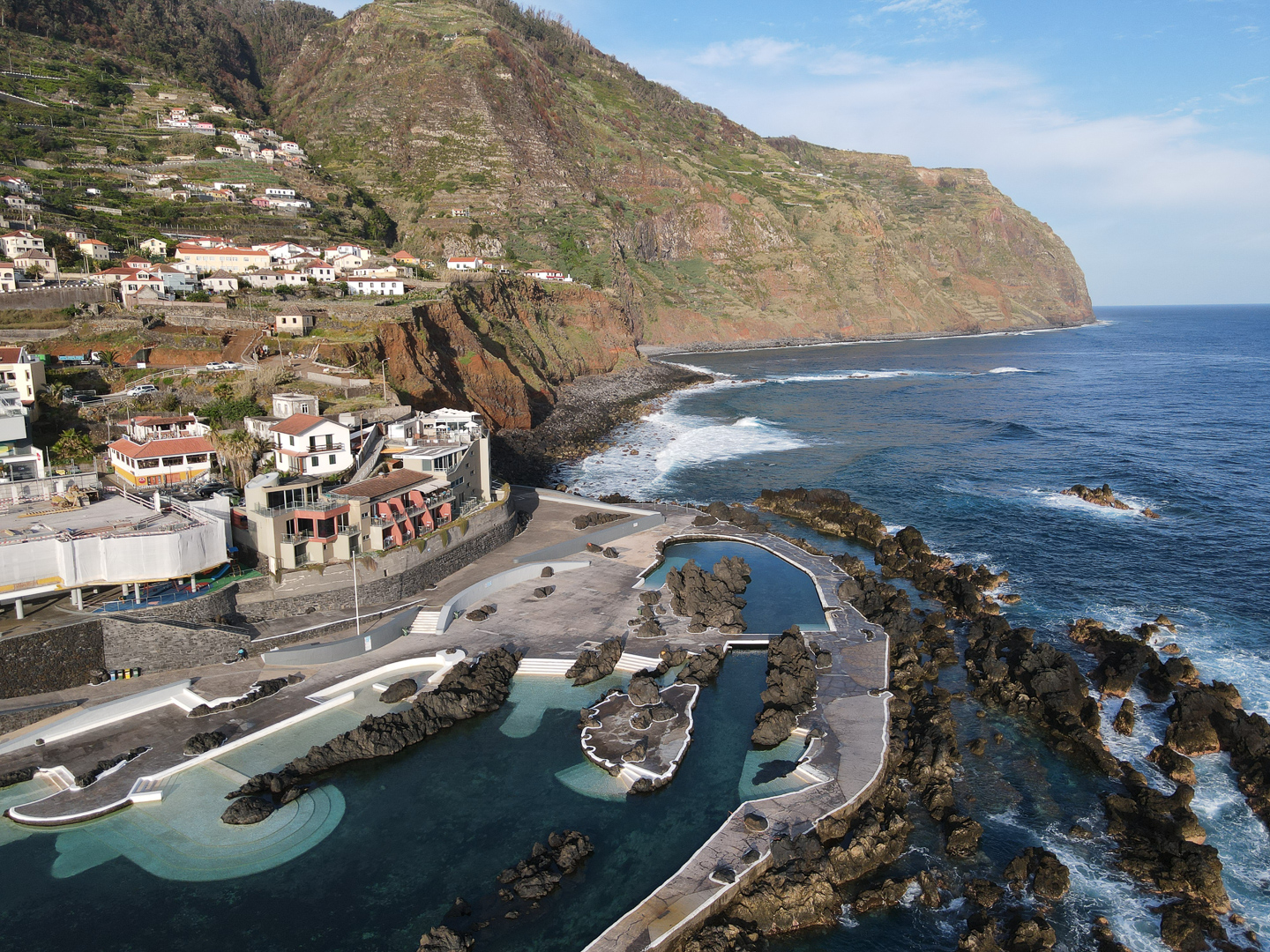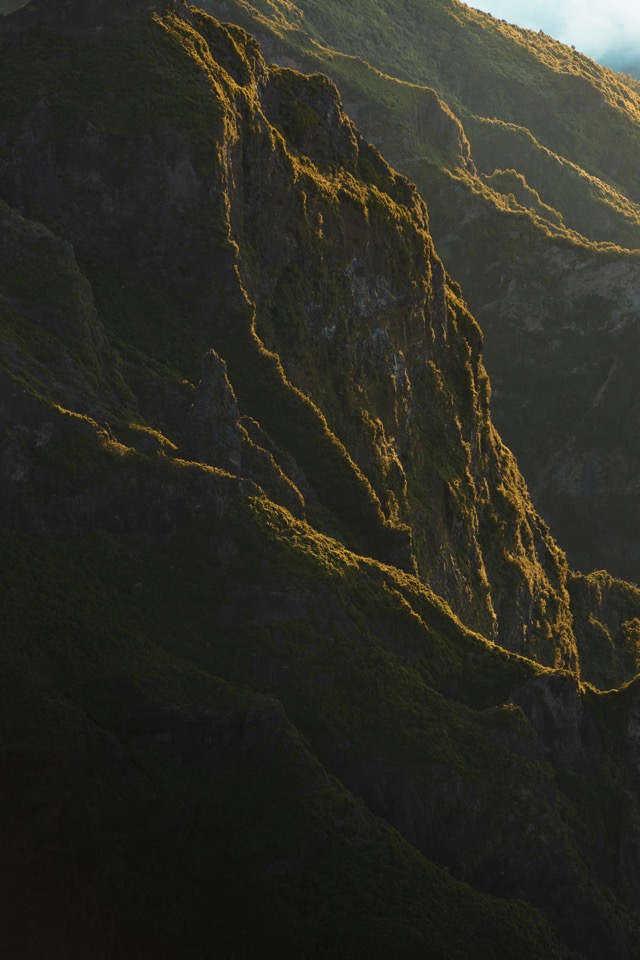Madeira Island
A lush paradise in the Atlantic, Madeira Island enchants with dramatic cliffs, emerald forests, and year-round blooms. Discover scenic levada walks, vibrant Funchal, and world-renowned wine in Portugal’s floating garden.
Madeira Island
Nestled in the Atlantic, Portugal’s Madeira Island is a verdant jewel. Here, dramatic volcanic landscapes meet lush subtropical forests, offering a serene escape. Wander through ancient levada trails, discover vibrant botanical gardens, and savour the island’s unique wines. A place of timeless beauty and tranquil exploration.
Province Facts
- Official Name: Autonomous Region of Madeira
- Geographical Location: An archipelago in the North Atlantic Ocean, southwest of mainland Portugal.
- Capital City: Funchal
- Approximate Area: 741 sq km (286 sq miles)
- Population: Approximately 250,000 inhabitants.
- Main Economic Activities: Tourism, agriculture (especially wine and bananas), services, and fishing.
- Key Geographical Features: Volcanic origin, characterized by dramatic cliffs, steep mountains (e.g., Pico Ruivo), lush laurel forests (Laurissilva, a UNESCO World Heritage site), and extensive levadas (irrigation channels).
- Dominant Climate Type(s): Subtropical Mediterranean, with mild temperatures year-round and distinct microclimates due to elevation and exposure.
- Common Languages/Dialects Spoken: Portuguese is the official language. A distinct Madeiran dialect of Portuguese is spoken. English is widely understood in tourist areas.
- Primary Access: Madeira Airport (FNC) near Funchal. Sea travel is also an option, with ferry services and cruise ship arrivals.
Essentials
- Best Months to Visit: April, August, December, February, January, July, June, March, May, November, October, September
When to visit
Spring (March to May)
Spring is one of the best times to visit Madeira Island, as the weather is mild and the island bursts into vibrant colors. Daytime temperatures range between 18°C and 22°C (64°F–72°F), making it perfect for hiking and outdoor activities. The famous Madeira Flower Festival in April transforms Funchal into a floral paradise with parades, exhibitions, and intricate flower carpets.
- Ideal for nature lovers, with blooming wildflowers and lush landscapes.
- Fewer crowds compared to summer, offering a more relaxed experience.
- Great conditions for exploring levadas (irrigation channels turned hiking trails).
Summer (June to August)
Summer brings warm, sunny weather with temperatures averaging 24°C–28°C (75°F–82°F), ideal for beachgoers and water sports enthusiasts. The Atlantic waters are calmest during this season, perfect for swimming, snorkeling, or whale watching. The Atlantic Festival in June kicks off the season with spectacular fireworks displays over Funchal Bay.
- Peak tourist season—book accommodations well in advance.
- Long daylight hours maximize sightseeing opportunities.
- Festivals like the Wine Festival in August celebrate Madeira’s rich viticulture.
Autumn (September to November)
Autumn offers pleasant temperatures (20°C–25°C / 68°F–77°F) and fewer tourists, making it a great time for a quieter visit. The sea remains warm enough for swimming until late October. The Madeira Wine Festival in September showcases traditional grape harvests and wine-making techniques.
- Ideal for food and wine enthusiasts.
- Hiking trails are less crowded, with comfortable weather.
- Occasional rain showers, but generally stable conditions.
Winter (December to February)
Winter in Madeira is mild, with temperatures rarely dropping below 16°C (61°F). While not beach weather, it’s perfect for exploring cultural sites and enjoying festive events. The island’s famous New Year’s Eve celebrations feature one of the world’s largest fireworks displays, drawing visitors globally.
- Great for escaping colder European winters.
- Christmas markets and decorations create a magical atmosphere.
- Higher chance of rain, but still plenty of sunny days.
Key Considerations
Madeira’s microclimates mean weather can vary between the north and south coasts. The south is generally sunnier, while the north is lusher but rainier. Pack layers for elevation changes, especially if hiking in the mountains. Major events can cause price spikes, so plan accordingly.
What to pack
Madeira’s subtropical climate and rugged terrain call for a few key items beyond the usual travel essentials. Pack a light waterproof jacket—sudden showers are common, especially in the mountains. Sturdy hiking shoes with grip are a must for exploring the levadas (irrigation trails) and steep coastal paths.
- Reusable water bottle: Fresh mountain water is safe to drink from natural springs, so you can refill on hikes.
- Swimwear & quick-dry towel: The island’s volcanic pools and pebble beaches invite spontaneous dips.
- Sun protection: High UV levels mean sunscreen, sunglasses, and a hat are non-negotiable, even on cloudy days.
- Light layers: Temperatures shift quickly between coastal warmth and cooler highland areas.
If visiting in winter, add a warmer mid-layer for evenings or high-altitude excursions. A compact umbrella is handy for sudden downpours in Funchal. Skip heavy luggage—Madeira’s cobbled streets and steep hills favor backpacks or wheeled bags with sturdy handles.
Getting there
By Air
The quickest and most convenient way to reach Madeira Island is by flying into Cristiano Ronaldo Madeira International Airport (FNC), located near the capital city of Funchal. The airport serves direct flights from major European cities, including Lisbon, Porto, London, Frankfurt, and Paris. Airlines such as TAP Air Portugal, easyJet, and Ryanair operate regular routes.
By Sea
Madeira is a popular stop for cruise ships, with the Port of Funchal accommodating numerous vessels year-round. Ferries are less common, but occasional services connect the island to mainland Portugal and other Atlantic islands like the Azores.
By Road (Driving Routes)
While Madeira is an island, renting a car is a great way to explore its scenic landscapes. The island has a well-maintained road network, including the VR1 (Via Rápida), which connects Funchal to the airport and other key areas. Note that roads can be steep and winding, so cautious driving is advised.
Public Transport
Madeira offers reliable public transportation, primarily operated by Horários do Funchal. Buses connect Funchal with major towns and tourist spots. For remote areas, renting a car or joining guided tours may be more practical.
Train Travel
Madeira does not have a railway system, so train travel is not an option. However, the island’s bus network and taxis provide efficient alternatives for getting around.
Practical Tips
- Book flights early during peak seasons (summer and Christmas) for better prices.
- Consider renting a car for flexibility, especially if exploring rural areas.
- Taxis and ride-sharing apps like Bolt are widely available in Funchal.
- Public buses are affordable but may have limited schedules in less populated regions.
Getting around
Public Buses
Madeira's public bus network, operated by Horários do Funchal and Rodoeste, is the most affordable way to explore the island. Buses connect Funchal with major towns like Câmara de Lobos, Machico, and Porto Moniz, as well as popular attractions such as Cabo Girão and Pico do Arieiro.
- Tickets are purchased onboard (cash only) or via rechargeable Giro cards for frequent riders.
- Fares range from €1.50–€5 depending on distance; routes to remote areas may have limited schedules.
- Check timetables in advance—service frequency drops on weekends and holidays.
Taxis & Ride-Sharing
Taxis are widely available in urban areas like Funchal and at airports. They’re metered, but fixed rates apply for common tourist routes (e.g., Funchal to Monte). Bolt operates as a ride-sharing alternative, often cheaper than traditional taxis.
- Average short trips cost €10–€15; agree on fares for longer journeys upfront.
- Taxis can be hailed on the street or booked via apps like Taxi Madeira.
Car Rentals
Renting a car is ideal for exploring Madeira’s rugged coastline and mountain roads. Major rental companies operate at Cristiano Ronaldo Airport and in Funchal.
- Expect narrow, winding roads with steep drops—confidence driving in challenging terrain is essential.
- Key routes: VR1 (coastal highway), ER101 (north coast), and ER110 (mountainous interior).
- Parking can be tricky in Funchal; opt for hotels with parking or use paid lots.
Unique Transport Options
Madeira offers a few distinctive ways to get around:
- Monte Cable Car: Links Funchal to the hilltop village of Monte (€11 one-way), with connections to the famous wicker toboggans (€30 for two).
- Ferries: Porto Santo Line operates services to Porto Santo Island (2.5 hours; €70 round-trip).
Culture
Geography and Isolation
Madeira Island, an autonomous region of Portugal, lies in the Atlantic Ocean about 520 km west of Morocco. Its volcanic origins and rugged terrain have shaped a distinct cultural identity, blending Portuguese traditions with unique island adaptations. The steep cliffs, lush Laurisilva forests (a UNESCO World Heritage Site), and microclimates influence daily life, agriculture, and even architecture.
Language and Identity
While Portuguese is the official language, Madeirans speak with a distinctive accent and use local expressions. The island’s isolation fostered a strong regional identity, with pride in its autonomy. Cultural symbols like the tricana (traditional female dress) and the brinquinho (a doll-like musical instrument) are emblematic of Madeiran folklore.
Festivals and Traditions
- Carnival: One of Portugal’s most vibrant, featuring elaborate parades with satirical floats and samba influences.
- Festa da Flor (Flower Festival): A spring celebration where streets are carpeted with flowers, reflecting the island’s botanical richness.
- Wine Harvest Festival: Honors Madeira’s famed fortified wine, with grape-stomping and folk performances.
Cuisine
Madeiran food is hearty and seafood-heavy, with staples like espetada (garlic-marinated beef skewers hung on bay leaves) and bolo do caco (sweet potato flatbread). Unique to the island is poncha, a potent drink made with aguardente, honey, and citrus. The cultivation of bananas, passionfruit, and sugarcane also plays a key role in local gastronomy.
Music and Dance
Traditional bailinho dances, accompanied by accordion and ukulele-like rajão, are central to folk celebrations. The charamba (a humorous song style) and mourisca (a mock battle dance) reflect the island’s mix of African, Moorish, and Portuguese influences.
Religion and Customs
Deeply Catholic, Madeira’s religious festivals, like the Festa do Senhor Bom Jesus, blend devotion with pageantry. Small chapels (ermidas) dot the landscape, and the romaria (pilgrimage) to the Nossa Senhora do Monte sanctuary remains a key tradition.
Crafts and Artisanship
Madeira is known for intricate wickerwork, embroidery (a 19th-century English-influenced craft), and vinhaticos (wooden toys). The island’s artisans also produce traditional barretes (wool caps) and ceramics with geometric motifs.







